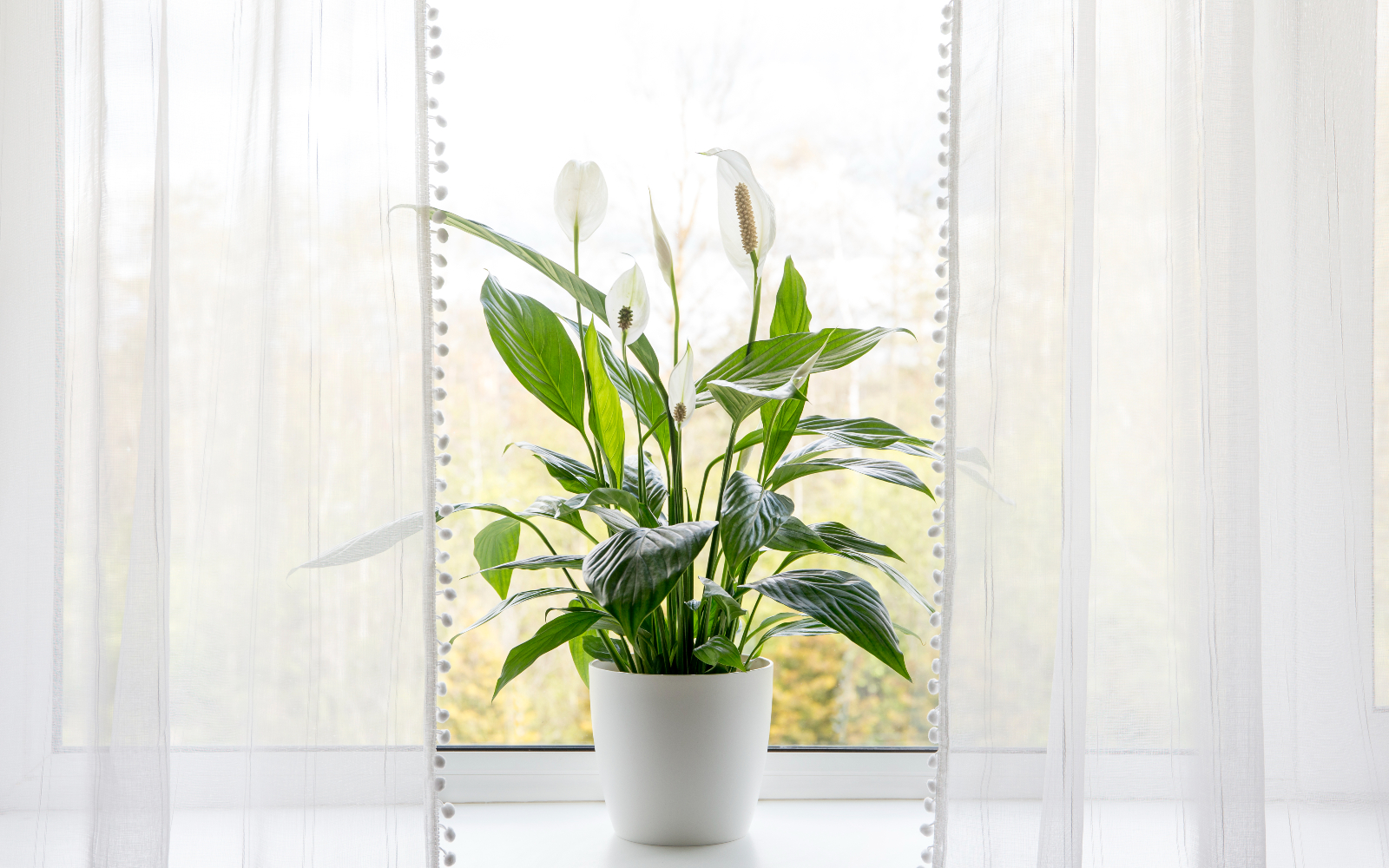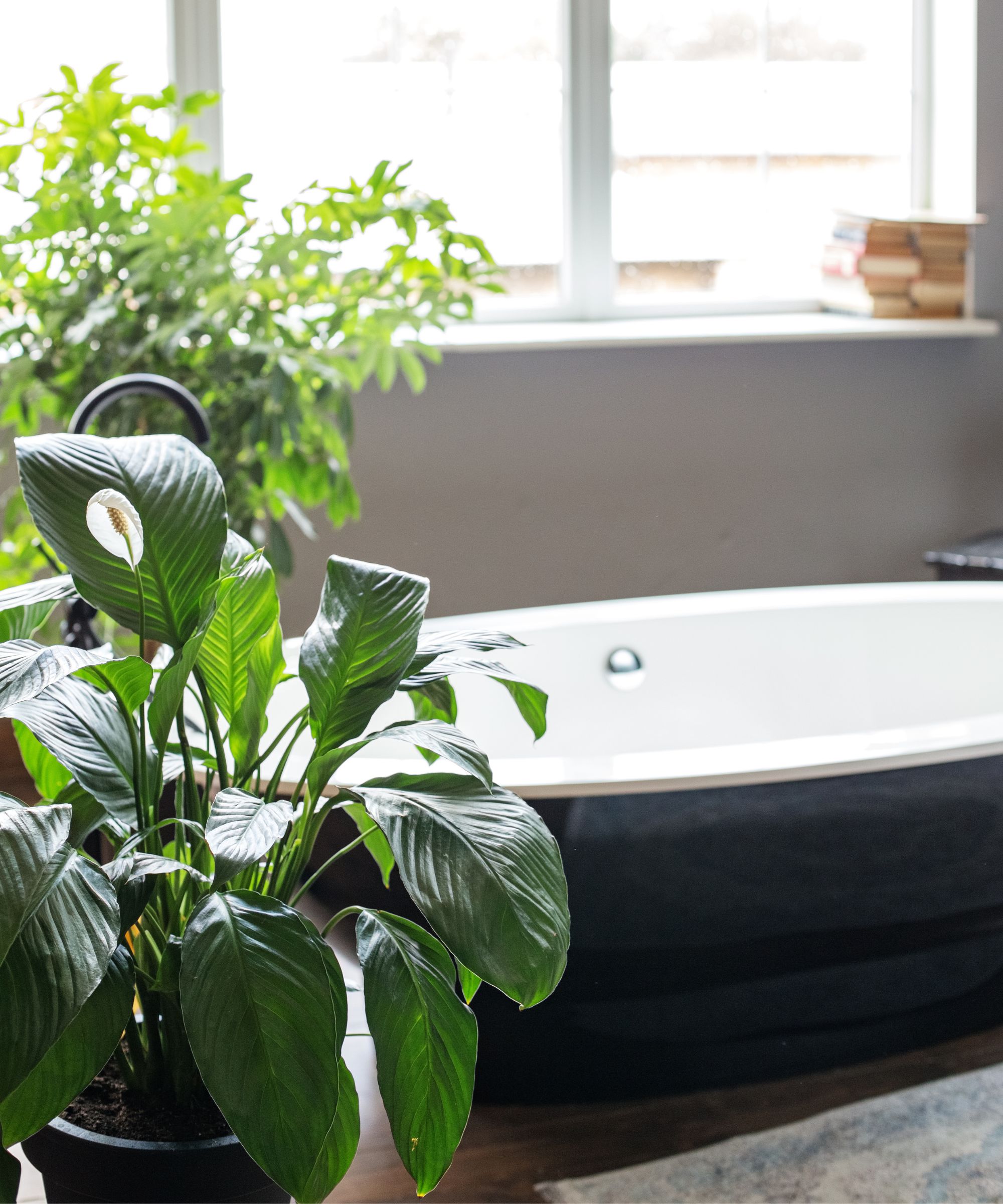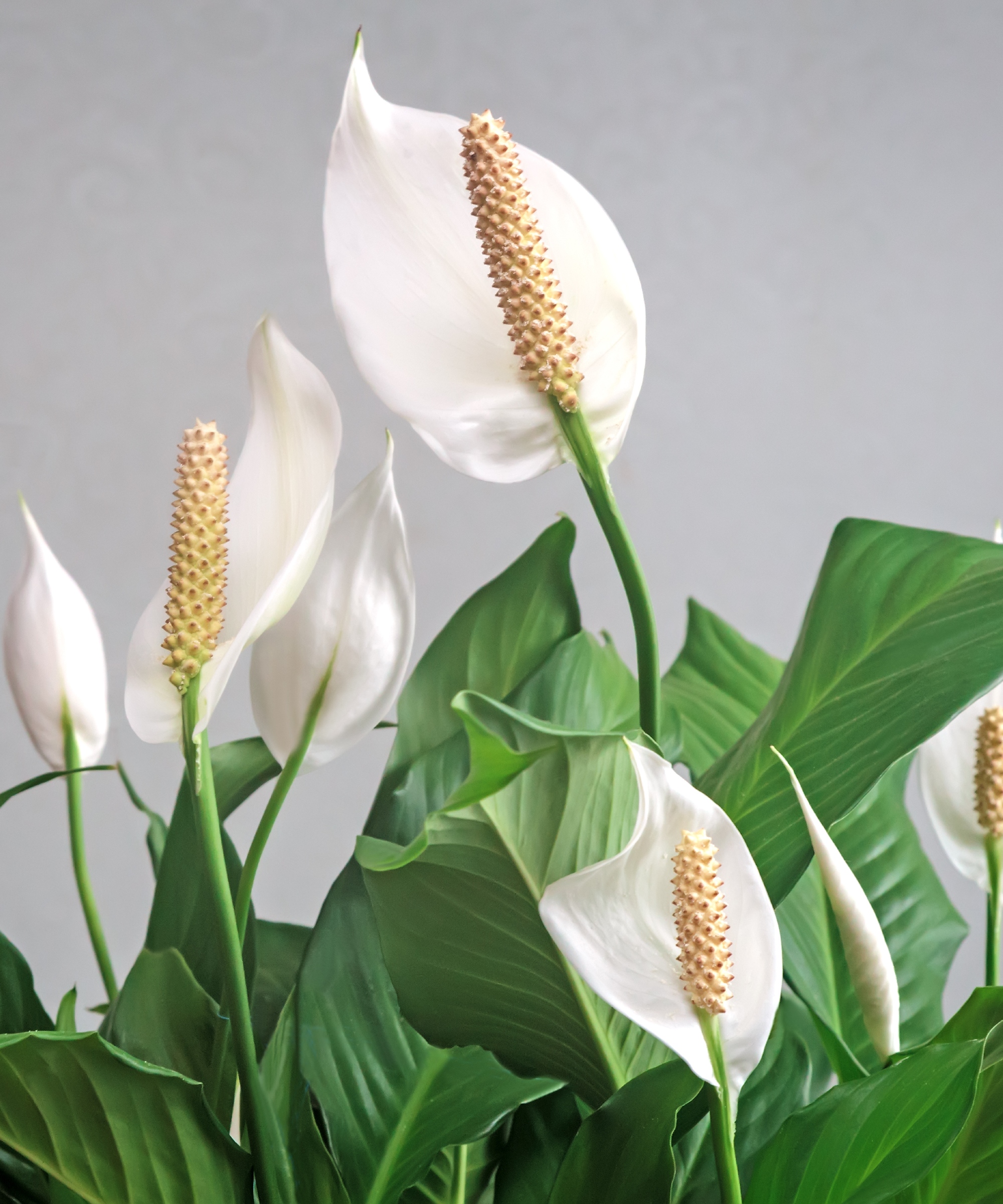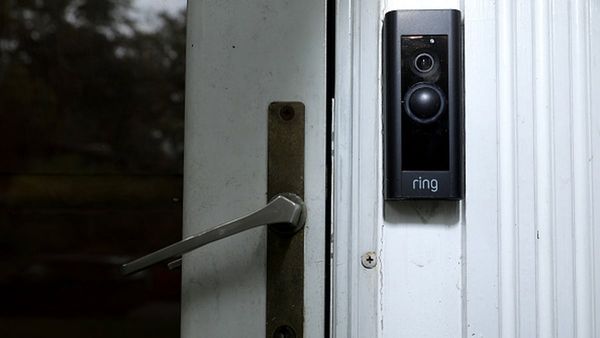
Peace lilies are some of the most elegant indoor plants you can add to your interiors. They produce flower spikes with pure white blooms and have glossy foliage that equally wows. The secret to success with these plants? Fertilizer.
If you care for a peace lily, you'll inevitably be faced with fading flowers at some point. You'll then be keen to encourage returning blooms, and one of the best ways to do this is by fertilizing peace lilies. While you can use one of the many commercial fertilizers on the market, it's much more rewarding to make your own peace lily fertilizer.
It's a quick DIY that allows you to personalize the concoction to what your peace lily needs at that time. With so many possibilities for making your own peace lily feed, it can be hard to know exactly which ingredients to include. Here, we take a look at an expert-approved recipe that will help your peace lily thrive for longer.
A quick DIY peace lily fertilizer recipe

Just like making your own orchid fertilizer, a DIY peace lily fertilizer requires sources of essential plant nutrients that will support the growth of this indoor flowering plant.
'Peace lilies prefer a balanced, gentle fertilizer with a slightly higher nitrogen content to support leaf growth. You can create a DIY fertilizer using kitchen scraps or natural ingredients,' says Alex Kantor, owner of Perfect Plants Nursery.
With that in mind, you can make your own peace lily fertilizer with the following ingredients:
- Banana peels, coffee grounds, and/or eggshells
- Bloodmeal, from Amazon
- Bonemeal, from Amazon
- Kelp meal, from Amazon
- Optionally, worm castings, from Amazon
No matter which kind of houseplant fertilizer you're planning to make, it's wise to use a large mixing bowl (from Walmart) or work directly into a planter.
You can then start mixing together your ingredients to make your own peace lily fertilizer:
'Mix together one part bloodmeal for nitrogen, one part bonemeal for phosphorus and calcium, and two parts kelp meal for potassium and trace minerals,' advises Julie Bawden-Davis, indoor plant expert at Healthy Houseplants.
If you have your own wormery, using your homemade compost can be a valuable ingredient to add to the mix:
'Add in one part worm castings for trace nutrients and microorganisms that help peace lilies stay healthy and fight off disease,' says Julie.
For an extra boost, turn your attention to using kitchen waste in the garden and unusual compost ingredients.
'Banana peels, used coffee grounds, and crushed eggshells are all excellent ingredients to add to your own DIY fertilizer,' Alex says. 'Coffee ground fertilizer for houseplants is especially important for peace lily nitrogen content,' he adds.
Likewise, banana peels are good for plants because they're rich in potassium, while eggshells are good for plants because of their calcium content.
Add a handful of each of these kitchen scraps to your DIY peace lily fertilizer and combine well. You should be left with a nutrient-rich, solid, slow-release fertilizer.
Fertilizing peace lilies: key facts to know

With your homemade peace lily fertilizer ready, it's time to feed your plant. But, experts say there are a few things to keep in mind to avoid fertilizing mistakes.
'From spring till fall, feed your plant now more than every two weeks to achieve the best growing results,' advises Anastasia Borisevich of Plantum.
Make sure to then stop fertilizing your peace lily during winter. 'Your plant isn’t as good at absorbing nutrients as usual during this time,' Anastasia explains. Fertilizer could burn roots or contribute to houseplant root rot during this season.
Fertilizing correctly will help peace lilies flower for longer and encourage new flower growth to emerge.
FAQs
Can you use chemical fertilizers for peace lilies?
While you can use chemical fertilizers for peace lilies (like this peace lily fertilizer from Amazon), houseplant experts recommend using an organic feed instead.
'Peace lily is susceptible to brown leaf tips, which is caused by high salts in the soil from too much fertilizer or chemical fertilizers, which are higher in salts than organic ones,' explains Julie Bawden-Davis, indoor plant expert at Healthy Houseplants.
Making a nutrient-rich peace lily fertilizer is only one component of successful peace lily care. If you want to further support their growth and encourage long-lasting blooms, why not try making your own peace lily potting mix?







